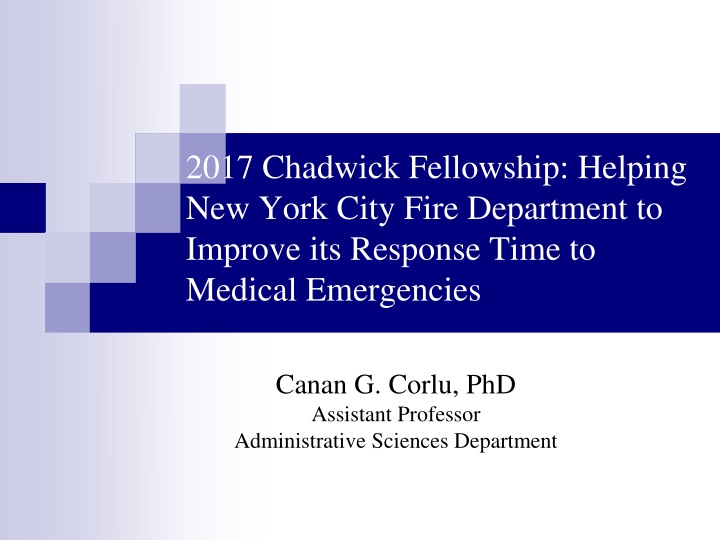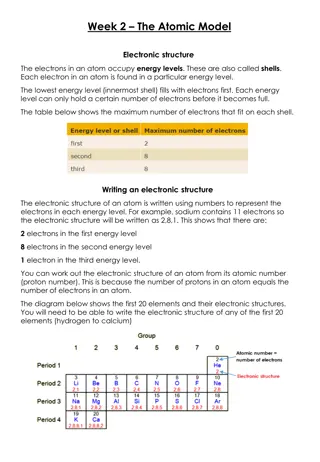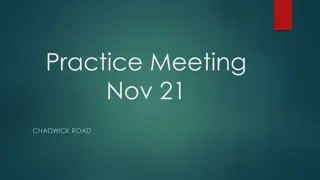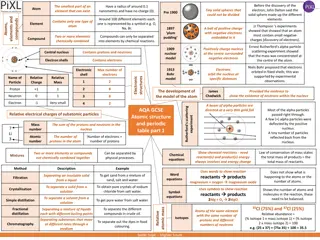
Improving NYC Fire Dept's Response Time to Medical Emergencies
Explore a research project on enhancing the New York City Fire Department's response time to medical emergencies by utilizing a computerized triage system. Evaluate the impact of changes on critical call response times and call center efficiency through simulation modeling.
Download Presentation

Please find below an Image/Link to download the presentation.
The content on the website is provided AS IS for your information and personal use only. It may not be sold, licensed, or shared on other websites without obtaining consent from the author. If you encounter any issues during the download, it is possible that the publisher has removed the file from their server.
You are allowed to download the files provided on this website for personal or commercial use, subject to the condition that they are used lawfully. All files are the property of their respective owners.
The content on the website is provided AS IS for your information and personal use only. It may not be sold, licensed, or shared on other websites without obtaining consent from the author.
E N D
Presentation Transcript
2017 Chadwick Fellowship: Helping New York City Fire Department to Improve its Response Time to Medical Emergencies Canan G. Corlu, PhD Assistant Professor Administrative Sciences Department
Background: 911 Call Call arrives into the system and severity of call is estimated Dispatcher checks the status of the system to determine which vehicle to send to the scene Vehicle arrives the scene and provides the service The vehicle returns to a predetermined location to wait for another call 2
Background: 911 Call The most critical step: Inefficiencies in the whole system Lead to loss of human life Call arrives into the system and severity of call is estimated Dispatcher checks the status of the system to determine which vehicle to send to the scene Vehicle arrives the scene and provides the service The vehicle returns to a predetermined location to wait for another call 3
Computerized Triage System Traditionally, the severity of an incoming call is judged by a 911 agent. FDNY is working on automating this process and currently working on a computerized triage method. Developed by medical doctors Fully dynamic and automatically guides the 911 agent to diagnose the call. Two types of ambulances: ALS and BLS ALS: for more critical patients and resources are limited. 4
Computerized Triage System: Does it Work? How does the traditional way of judging severity of a call compare to the computerized triage method in terms of the usage of resources in the system? Two main changes have been identified: It becomes harder for the caller to secure an ALS ambulance Agent spends more time with the caller on the phone. 5
My Research Investigate the impact of the changes in the whole system: What is the impact of the change in ALS requirements on response times for critical calls? What is the impact of longer talk times on call center staffing and percentage of unanswered calls? My approach: Develop a computer simulation model of the system 6






















